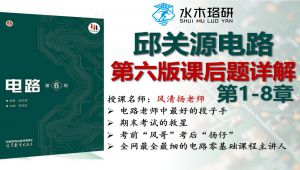(神经系统解剖、生理、定位诊断与神经系统检查、辅助检查)
【目的要求】
一、掌握内容:
1、感觉、运动系统的定位诊断
2、瘫痪的类型
3、运动性、感觉性、命名性及混合性失语
4、脑脊液各项指标的正常值
二、熟悉内容:
1、视、动眼、外展、三叉、面、舌咽、迷走神经和舌下神经损时的主要症状体征,特别是眼肌麻痹表现
2、常见不自主运动及共济失调类型
3、深、浅及病理反射的临床意义
4、意识障碍的分类和特殊类型的意识障碍及脑死亡
5、脑不同部位损害的临床表现
6、神经系统疾病的病史采集和临床常规检查方法以及与各论中疾病有关的定位诊断
三、了解内容:
电生理、影像学检查的意义及基因学诊断技术
【Objectives】
After completing of this chapter, you should have achieved the following goals:
1、Master topographic diagnosis of motor and sense lesions
2、Master the types of paralysis
3、Master the characteristics and lesion sites of motor aphasia, sensory aphasia, amnesic aphasia and total aphasia
4、Master the normal values of cerebral spinal fluid (CSF) inspection
5、Familiar with the main manifestations of lesions of: optic nerve、oculomotor nerve、abducent nerve、trigeminal nerve、facial nerve、glossopharyngeal nerve、vagus nerve and hypoglossal nerve; especially the manifestations of ophthalmoplegia
6、Familiar with the frequent types of involuntary movements and ataxia
7、Familiar with the clinical importances of superfacial reflexes, deep reflexes and abnormal reflexes
8、Familiar with: the levels of conciousness disorders, special types of conciousness and brain death
9、Familiar with: symptoms and signs of lesions of different part of the brain
10、Familiar with: The method of history collection and routine clinical examination, relative topographic diagnosis
11、Knowing the electrophysiology, imaging studies, and genetic investigations in neurology
【教学时数】 6学时
【lecturing time】 6 hour
【教学内容】
一、意识障碍的分级及特殊类型的意识障碍、脑死亡
二、常见的失语(运动、感觉及混合性失语)及构音障碍的解剖基础与临床表现
三、视、动眼、滑车、外展、面、舌咽、迷走、舌下等颅神经损害的主要症状、体征, 核上、下型眼肌麻痹表现
四、感觉系统
1、感觉的分类:特殊感觉、一般感觉、复合感觉
2、深浅感觉的传导通路、主要节段支配
3、感觉障碍的几种类型
4、各种感觉障碍的临床表现和感觉障碍的定位诊断(皮质、内囊、脑干、脊髓、周围神经损害的特点)。
五、运动系统
1、运动系统包括的范围(随意运动、锥体外系统及小脑系统),随意运动系统的传导解剖通路
2、随意运动障碍及上、下运动神经元瘫痪的鉴别
3、瘫痪的定位诊断(皮质、内囊、脑干、脊髓及损害表现)
4、锥体外系统运动障碍,不自主运动、肌张力变化
(1)不自主运动:震颤、痉挛、抽搐、舞蹈样动作、手足徐动症及扭转痉挛
(2)肌张力变化:强直性增高、变型性肌张力障碍、肌张力降低。
5、小脑系统运动障碍:共济失调的临床表现及检查方法
六、反射系统
深、浅反射的改变,病理反射的临床意义,常见几种病理反射
七、大脑、小脑、脑干的解剖及各部位损害的临床特点。
八、辅助检查
1、脑脊液:压力及各项指标正常值、电生理(脑电图、肌电图、诱发电位)、组织显像(CT、MRI、同位素等)等项检查的临床意义,组织活检(肌肉、神经、脑)的临床意义。
2、神经心理学检查(自学)
【lecturing contents】
1、Classification of conscious disturbance, special types of conciousness, brain death
2、Manifestation of different aphasia and their localization; the anatomy and manifestation of dysphasia
3、the main manifestations of lesions of: optic nerve、oculomotor nerve、abducent nerve、trigeminal nerve、facial nerve、glossopharyngeal nerve、vagus nerve and hypoglossal nerve; the manifestations of upper and lower motor neuron paralysis of extraocular muscles
4、Sensory system:
(1)classification of sensation: special sensation, common sensation, complex sensation
(2)the conducting contract pathway of superfacial and deep sensation; mian spreading section
(3)classification of sensational disorders
(4)manifestation of each kinds of sensation and the topography diagnosis of sensational disturbances (cortex, internal capsule, brain stem, spinal cord, peripheral nerve )
5、Movement system:
(1)Aspect of movement system (voluntary movement, extrapyrimidal system and cerebellar system), the conduct tract pathway of voluntary movement system
(2)Disturbances of voluntary movement; differentiation of the upper and the lower motor neuron paralysis
(3)topography diagnosis of palsy(cortex, internal capsule, brain stem, spinal cord)
(4)Disturbances of extrapyrimidal system; involuntary movement, changing of musclar tone
①Involuntary movement: tremor, spasm, tic, and so on
②Changing of muscular tone: rigidity, and so on
(5)Disturbances of cerebellar system: manifestation and examination of ataxia
6、Reflex system
Changing of superficial, deep reflex, clinical importance of pathological changes, pathological reflexes found often in clinic
7、The anatomy and the manifestation of lesions of the Cortex、Cerebellum、Brain stem: anatomy, signs and symptoms
8、Investigative studies:
(1)CSF: pressure, normal values. Electrophysiology(EEG, EMG, EP); Tissue imaging(CT, MRI, and so on); Tissue biopsy( muscle, nerve, brain)
(2)neuropsychology ( studying by students themselves)
脑血管疾病
(Cerebrovascular diseases)
【目的要求】
一、掌握内容:
掌握脑动脉血栓形成、脑出血、脑栓塞和蛛网膜下腔出血的临床表现、诊断、鉴别诊断和治疗原则
二、熟悉内容:
熟悉短暂性脑缺血发作的概念、特点及治疗措施
三、了解内容:
1、了解急性脑血管疾病的分类,危险因素和预防
2、了解腔隙性及分水岭脑梗死的概念,临床特点及治疗措施
【Objectives】
1、Master: the clinical manifestation, diagnosis, differential diagnosis and treatment principle of cerebral infarction, apoplexy and subarachnoid hemorrhage
2、Familiar with: the conception, manifestation and treatment of transient ischemic attack.
3、Knowing: classification, risk factor and prevention of cerebrovascular disease.
4、Knowing: conception, clinical manifestation, treatment of lacunar infarction,cerebral watershed infarction
【教学时数】 6学时
【lecturing time】 6 hours
【教学内容】
1、脑血管应用解剖、脑血管病的危险因素及病因
2、动脉血栓性脑梗死的病因和发病机制、病理、临床表现、诊断和鉴别诊断、治疗原则
3、脑栓塞病因、表现
4、短暂性脑缺血发作的病因、临床特点、诊断、治疗
5、脑出血的病因、发病原理、病理、临床表现、诊断和鉴别诊断、治疗原则
6、蛛网膜下腔出血的病因、病理、临床表现、辅助检查、诊断、鉴别诊断和治疗原则
7、腔隙性和分水岭脑梗死的定义,病因、临床表现、诊断和治疗
【lecturing contents】
1、Blood supply of the brain and symptom of occlusion of main cerebral vessels, risk factors and causes
2、The etiology, pathogenesis, clinical manifestation, diagnosis, differential diagnosis and treatment principles of cerebral thrombosis
3、The etiology, clinical manifestation, diagnosis, differential diagnosis and treatment principles of cerebral embolism
4、The etiology, clinical manifestation, diagnosis, and treatment principles of transient ischemic attack.
5、The etiology, pathogenesis, clinical manifestation, diagnosis, differential diagnosis and treatment principles of cerebral hemorrhage
6、The etiology, pathogenesis, clinical manifestion, diagnosis, differential diagnosis and treatment principles of subarachnoid hemorrhage.
7、Conception, cause, manifestation, diagnosis and treatment of lacunar infarction
8、Conception, cause, manifestation, diagnosis and treatment of cerebral watershed infarction
9、Conception, cause, manifestation, diagnosis and treatment of cerebral cerebral venous thrombosis
周围神经病
(Peripheral Neuropathy)
急性炎症性脱髓鞘性多发性神经病
(Guillain-Barre’综合征, GBS)
【目的要求】
一、掌握内容:
掌握急性炎症性脱髓鞘性多发性神经病的临床表现及诊断
二、熟悉内容:
熟悉急性炎症性脱髓鞘性多发性神经病的鉴别诊断和治疗原则
【Objectives】
1、Master: the clinical manifestation and diagnosis of Gullain-Barre’ syndrome
2、Familiar with: the differential diagnosis and treatment principles of Gullain-Barre’ syndrome
【教学时数】 40分钟
【lecturing time】 40 min
【教学内容】
1、病因:多种原因引起的自身免疫性疾病
2、病理:神经根、神经节、周围神经的主要病理改变是髓鞘脱失
3、临床表现:急性或亚急性发作;对称性四肢周围性瘫痪;未梢型感觉障碍;可伴有颅神经麻痹、电生理检查、脑脊液内的蛋白细胞分离现象,呼吸肌麻痹是主要死因
4、诊断和鉴别诊断:本病主要与急性脊髓炎、急性脊髓灰质炎、周期性麻痹鉴别
5、治疗::①对症治疗、瘫痪(包括球麻痹和呼吸肌麻痹)的治疗。②病因治疗:免疫球蛋白、血浆置换
【lecturing contents】
1、Etiology: autoimmune mediated
2、Pathology:
3、Clinical manifestation: supranuclear paralysis of four limbs, distal sensory impairment, cranial nerve palsy, separation of CSF protein and leucocytes, decreased nerve conduction velocity
4、Diagnosis and differentiation: differential diagnosis with low potassium periodic paralysis, myasthenia gravis and acute myelitis
5、Treatment: ① symptomatic treatment; ②etiologic treatment: plasma exchange, immunoglobulin injection of vein
多发性神经病
(Polyneuropathy)
【目的要求】
一、掌握内容:
掌握多发性周围神经病的临床表现特点
二、熟悉内容:
熟悉多发性神经病的病因
【Objectives】
1、Master the clinical features of polyneuropathy.
2、Familiar with causes of polyneuropathy.
【教学时数】10分钟
【lecturing time】 10 min
【教学内容】
1、病因:感染、中毒、营养、代谢、结缔组织病、遗传性疾病、肿瘤、poems
2、临床表现:
(1)四肢远端无力、萎缩
(2)手套、袜套样各种感觉障碍
(3)皮肤颜色改变与汗液改变
3、诊断 :①注意病因诊断②电生理检查
4、治疗原则:①病因治疗是关键②B族维生素③对症④康复治疗
【lecturing contents】
1、Etiology: poisoning, poor nutrition, infection, metabolism, autoimmune and heredity,tamour, poems
2、Clinical manifestation: amyosthenia and amyotrophia in distal segments of limbs; sensory loss of glove and socks form; weak or loss of tendon reflex; autonomic dysfunction
3、Diagnosis: ideological diagnosis
4、Treatment principle
特发性面神经麻痹<面神经炎>
(Idiopathic facial palsy)
【目的要求】
一、掌握内容:
掌握特发性面神经麻痹的临床表现
二、熟悉内容:
熟悉治疗方法
【Objectives】
1、Master the clinical manifestation of idiopathic facial palsy
2、Familiar with the treatment of idiopathic facial palsy
【教学时数】 20分钟
【lecturing time】 20 min
【教学内容】
1、病因:未完全明确
2、临床表现:急性起病,呈单侧面神经周围性麻痹的症状和体征
3、诊断:与其它原因引起的面神经麻痹
4、治疗:急性期短期用①皮质类固醇②神经营养药物进行治疗③针灸、理疗④眼的护理
【lecturing contents】
1、Etiology
2、Clinical manifestation: symptoms and signs of unilateral peripheral facial palsy (Bell’s palsy)
3、Diagnosis: differential diagnosis with supranuclear facial paralysis and those due to other reasons
4、Treatment: ①corticosteroids ②vitamin B1and B2 in acute phase; ③facial muscle training and physiotherapy④ nursing care on the eyes
三叉神经痛
(Trigeminal nerve disease)
【目的要求】
熟悉内容:
1、熟悉三叉神经痛的临床表现
2、熟悉三叉神经痛的治疗方法
【Objectives】
1、Familiar with: the clinical manifestation of trigeminal neuralgia
2、Familiar with: the therapy of trigeminal neuralgia
【教学时数】 15分钟
【lecturing time】 15 min
【教学内容】
1、病因:原发性三叉神经痛的病原尚未完全明确
2、临床表现:
①疼痛的部位:二、三支
②疼痛的特点:性质、时间、反复
③扳机点
④间歇期正常无体征
3、诊断:
①诊断要点
②与症状性三叉神经痛相鉴别。
4、治疗:①药物:卡马西平、B12、鞍莫钠;②封闭:无水酒精注射;③射频热凝;④手术治疗,首选药物为卡马西平
【lecturing contents】
1、Etiology: not completely clear
2、Manifestation: repeated paroxysm of intense, stabbing pain in the distribution of mandibular and maxillary divisions of the trigeminal nerve
3、Diagnosis: differential diagnosis with the symptomatic trigeminal neuralgia
4、Treatment: ①medicine therapy: cabamazepine, large dose of vitamine B12, phenytoin sodium; ②nerve blocking or surgery: ③stereotactically controlled thermocogulatin of trigeminal roots using a radio-frequency generator; microvascular decompression
神经-肌肉接头与肌肉疾病
重症肌无力
(Myasthenia Gravis)
【目的要求】
一、掌握内容:
掌握重症肌无力的临床表现
二、熟悉内容:
1、熟悉重症肌无力危象的诊断
2、熟悉重症肌无力的处理
【Objectives】
1、Master: the clinical manifestation of myasthenia gravis
2、Familiar with: diagnosis of myasthenia gravis crisis
3、Familiar with: the treatment of myasthenia gravis
【教学时数】 30分钟
【lecturing time】30 min
【教学内容】
1、简述重症肌无力的病因,发病原理
2、临床表现:
临床特征——肌易疲劳性、症状波动性,三种危象的原因及鉴别要点
3、诊断与鉴别诊断:
诊断的主要依据:肌易疲劳的临床表现,疲劳试验阳性,药物试验,阳性肌电检查及AchR抗体滴度测定,是否有胸腺瘤,甲状腺机能亢进等疾病。并须与Lambert-Eaton综合征等病鉴别。肌无力危象的诊断
4、治疗:
抗胆硷酯酶药物、皮质类固醇,免疫抑制剂治疗、胸腺手术、危象处理
【lecturing contents】
1、Briefly introduce etiology and pathogenesis of myasthenia gravis
2、Clinical manifestation
3、Diagnosis and differential diagnosis of myasthenia gravis
4、Treatment of myasthenia gravis
周期性瘫痪
(Familial periodic paralysis)
【目的要求】
一、掌握内容:
掌握周期性瘫痪的临床表现及低血钾型周期性瘫痪的治疗
二、熟悉内容:
熟悉周期性瘫痪的鉴别诊断
【Objectives】
1、Familiar with: the clinical manifestation and treatment of periodic paralysis
2、Familiar with: the differential diagnosis of periodic paralysis
【教学时数】20分钟
【lecturing time】20min
【教学内容】
1、简述周期性瘫痪的病因及发病机制
2、低钾型周期性瘫痪的临床表现
3、各型周期性瘫痪的鉴别诊断
4、低钾型周期性瘫痪的治疗
【lecturing contents】
1、Introduce briefly etiology and pathogenesis of periodic paralysis
2、Clinical manifestation of periodic paralysis
3、Differential diagnosis on various types of periodic myasthenia
4、Treatment of periodic paralysis








